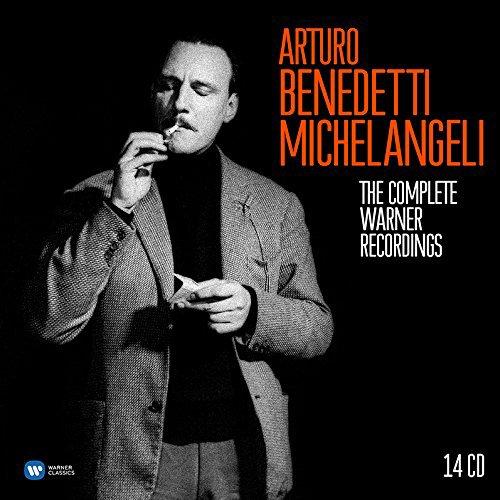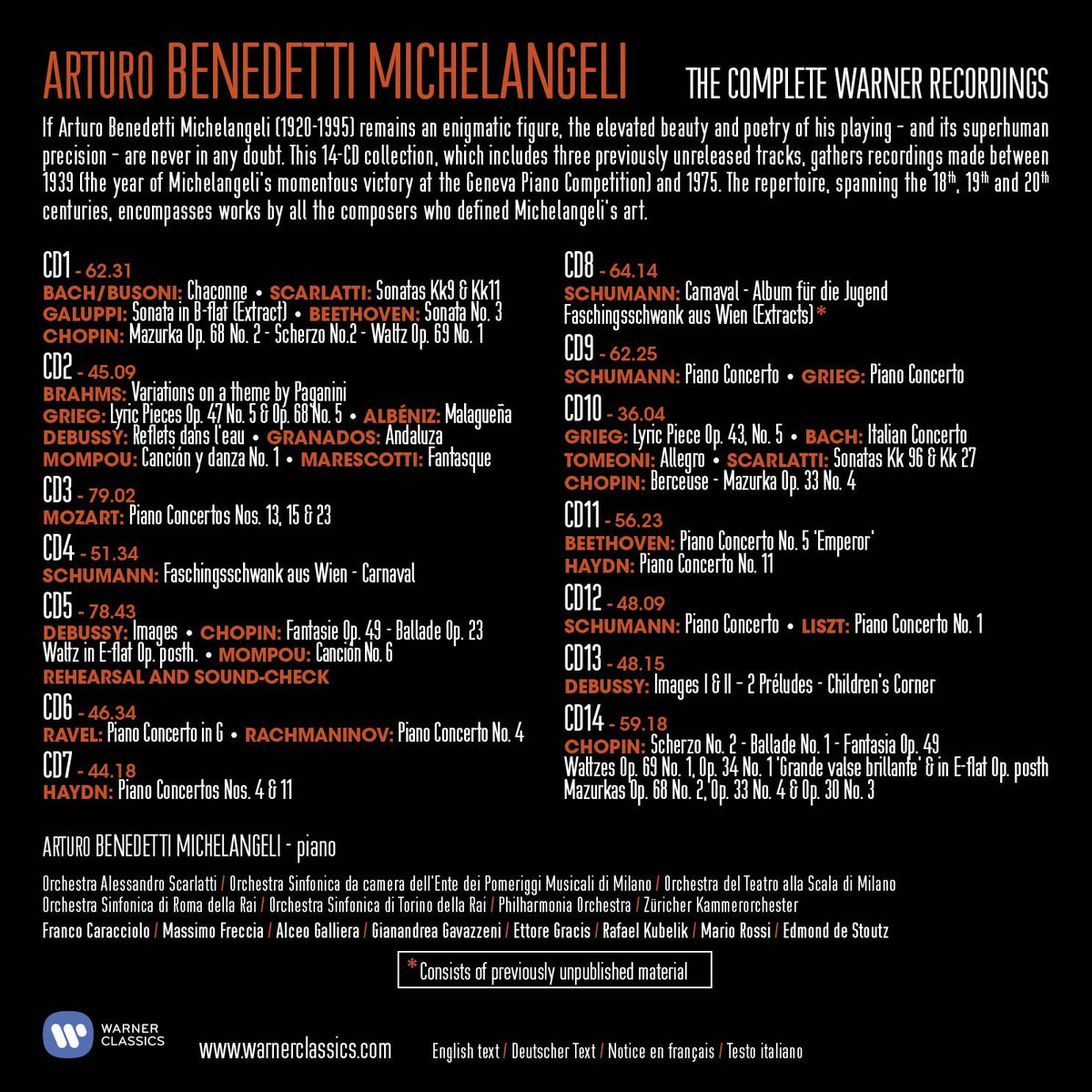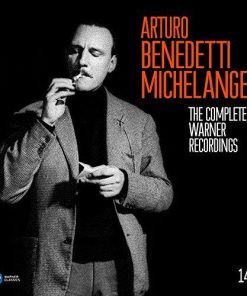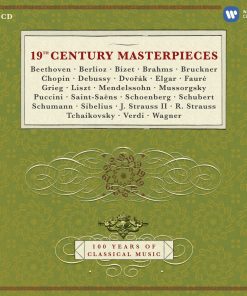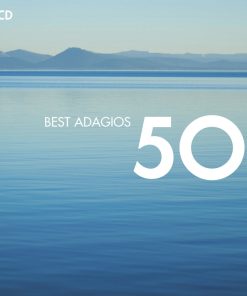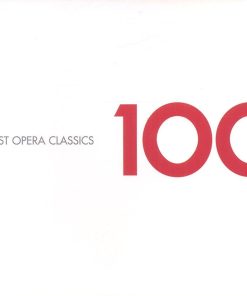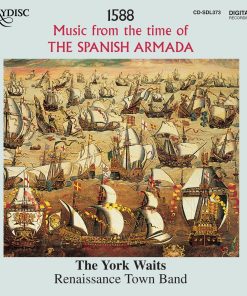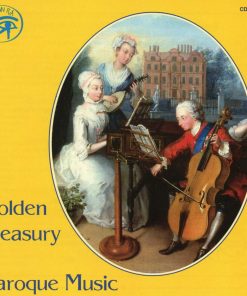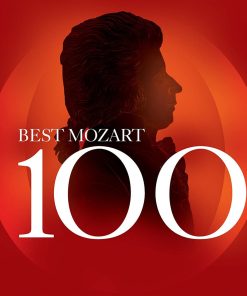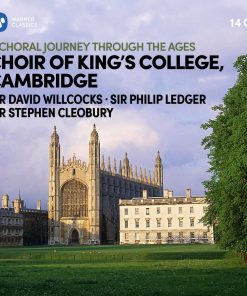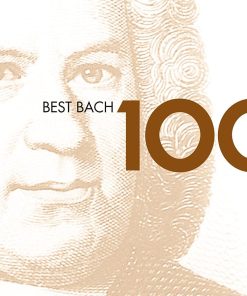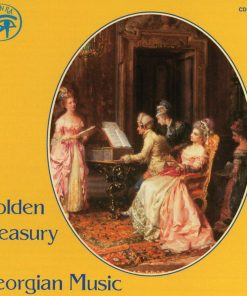Arturo Benedetti Michelangeli: The Complete Warner Recordings (14 CDs) WARNER CLASSICS
$ 41,99 $ 25,19

If Arturo Benedetti Michelangeli (1920-1995) remains an enigmatic figure, the elevated beauty and poetry of his playing “and its superhuman precision“ are never in any doubt. This 14CD collection, which includes three previously unreleased tracks, gathers recordings made between 1939 (the year of Michelangeli’s momentous victory at the Geneva Piano Competition) and 1975. The repertoire, spanning the 18th, 19th and 20th centuries, encompasses works by all the composers who defined Michelangeli’s art.
Released to mark the 20th anniversary of Arturo Benedetti Michelangeli’s death in 1995, this 14-CD collection gathers recordings made by the extraordinary Italian pianist between 1939 and 1975 and includes previously unreleased material from 1972 (the three movements from Schumann’s Faschingsschwank aus Wien). Spanning the 18th, 19th and 20th centuries, the repertoire encompasses works by all the composers who defined Michelangeli’s art.
Michelangeli was born in Brescia in Northern Italy in 1920. At the age of three he started learning the violin, but switched to the piano and received his diploma from the Milan Conservatory at the age of 13. In 1939, at the age of 19, he won the Grand Prix at the Geneva Piano Competition; the chairman of the jury, the great French pianist Alfred Cortot, is said to have described him as “a new Lisztâ€.
A very private man, Michelangeli appeared uncommunicative, even aloof on stage and he was famously perfectionist, both with respect to his pianism and to conditions under which he performed. He rarely played more than 20 engagements per season and over his career became notorious for cancelling concerts if the circumstances were less than ideal. He even acquired the habit of touring with two of his own pianos to ensure that the instrument for each performance met his exacting standards. He summed up the particular magic of his sound when speaking to the New York Times in 1977: “If you speak of my tone, then you must think not of the piano but a combination of the violin and the organ.â€
As Alain Cochard wrote in the French magazine Pianiste: “Michelangeli engaged in an intimate, one-on-one dialogue with the music, and he could only appear on stage if the conditions were in harmony with his sense of perfection … The fascinating sculptural quality of Michelangeli’s pianism can sometimes be mistaken for coldness, but appearances can be deceptive, as was the case for the man himself. The ice must be broken if we are to appreciate the true density and honesty of his interpretations.â€
The repertoire Michelangel performed was eclectic – ranging over the 18th, 19th and 20th centuries – but not expansive. According to the British newspaper the Independent, he was supreme in in the works of Debussy and Ravel: “He had an ability to evoke a colour world in which he achieved astonishing effects, combining sustained sound with a pearly clarity. He could mould the texture like melted wax into the subtlest shapes.â€
Writing of his early recordings (included in this collection), Gramophone stated that: “Michelangeli ranks among the grandest of all musical autocrats. And when his transcendent mastery is complemented by warmth, wit and charm, such additions are beyond price. Early in his career he possessed a Romantic as well as magisterial charisma, and listening to his performance of Bach’s Italian Concerto with its wealth of colour, nuance and resilience is to be reminded that a human heart beat beneath that legendary froideur.â€
Further evidence of the passions beneath Michelangeli’s cool surface emerges from his biography. In World War II he served as a pilot in the Italian air force before joining the Resistance. He was imprisoned by the Nazis, but escaped after eight months. The consummate pianist was also a keen racing driver, even competing in the famous Mille Miglia race that ran between Brescia and Rome. More significantly, he chose to devote much time to teaching, and among his students were Martha Argerich and Maurizio Pollini, two of today’s greatest pianists.

Albéniz: Malagueña (No. 3 from Espana, Op. 165)
Bach, J S: Italian Concerto, BWV971
Beethoven: Piano Concerto No. 5 in E flat major, Op. 73 ‘Emperor’
Beethoven: Piano Sonata No. 3 in C major, Op. 2 No. 3
Brahms: Variations on a theme by Paganini in A minor, Op. 35
Busoni: Transcription of Bach’s Partita BWV 1004: Chaconne
Chopin: Ballade No. 1 in G minor, Op. 23
Chopin: Berceuse in D flat major, Op. 57
Chopin: Fantasia in F minor, Op. 49
Chopin: Mazurka No. 20 in D flat major, Op. 30 No. 3
Chopin: Mazurka No. 25 in B minor, Op. 33 No. 4
Chopin: Mazurka No. 47 in A minor, Op. 68 No. 2
Chopin: Scherzo No. 2 in B flat minor, Op. 31
Chopin: Waltz No. 2 in A flat major ‘Grande Valse Brillante’, Op. 34 No. 1
Chopin: Waltz No. 9 in A flat major, Op. 69 No. 1 ‘Farewell Waltz’
Chopin: Waltz No. 17 in E flat major, Op. post., KKIVa:14, B 46
Debussy: Children’s Corner
Debussy: Images pour piano – Books 1 & 2
Debussy: Reflets dans l’eau (No. 1 from Images pour piano – Book 1)
Galuppi: Keyboard Sonata in B flat major, Illy No. 23
Granados: Danza española, Op. 37 No. 5 ‘Andaluza’
Grieg: Lyric Pieces Op. 43: No. 5 – Erotikon
Grieg: Lyric Pieces Op. 47: No. 5 – Melancholy
Grieg: Lyric Pieces Op. 68: No. 5 – At the cradle
Grieg: Piano Concerto in A minor, Op. 16
Haydn: Keyboard Concerto No. 4 in G major, Hob.XVIII:4
Haydn: Keyboard Concerto No. 11 in D major, HobXVIII:11
Liszt: Piano Concerto No. 1 in E flat major, S124
Marescotti: Fantasque
Mompou: Cancion y danza No. 1
Mozart: Piano Concerto No. 13 in C major, K415
Mozart: Piano Concerto No. 15 in B flat major, K450
Mozart: Piano Concerto No. 23 in A major, K488
Rachmaninov: Piano Concerto No. 4 in G minor, Op. 40
Ravel: Piano Concerto in G major
Scarlatti, D: Keyboard Sonata K9 in D minor
Scarlatti, D: Keyboard Sonata K11 in C minor
Scarlatti, D: Keyboard Sonata K27 in B minor
Scarlatti, D: Keyboard Sonata K96 in D major
Schumann: Album for the Young, Op. 68
Schumann: Carnaval, Op. 9
Schumann: Faschingsschwank aus Wien, Op. 26
Schumann: Piano Concerto in A minor, Op. 54
Tomeoni, P: Allegro in G
Â
Fast Shipping and Professional Packing
Due to our longstanding partnership with UPS FedEx DHL and other leading international carriers, we are able to provide a range of shipping options. Our warehouse staff are highly trained to pack your goods exactly according to the specifications that we supply. Your goods will undergo a thorough examination and will be safely packaged prior to being sent out. Everyday we deliver hundreds of packages to our customers from all over the world. This is an indication of our dedication to being the largest online retailer worldwide. Warehouses and distribution centers can be located in Europe as well as the USA.
Orders with more than 1 item are assigned processing periods for each item.
Before shipment, all ordered products will be thoroughly inspected. Today, most orders will be shipped within 48 hours. The estimated delivery time is between 3-7 days.
Returns
The stock is constantly changing. It's not entirely managed by us since we are involved with multiple parties such as the factory and our storage. The actual stock can fluctuate at any time. Please understand it may happen that your order will be out of stock when the order is placed.
Our policy is valid for 30 days. If you haven't received your product within 30 days, we're not able to issue either a return or exchange.
You are able to return a product if it is unused and in the same condition when you received it. It must also still remain in the original packaging.
Related products
MUSIC CDS
MUSIC CDS
MUSIC CDS
MUSIC CDS
MUSIC CDS
MUSIC CDS
MUSIC CDS
